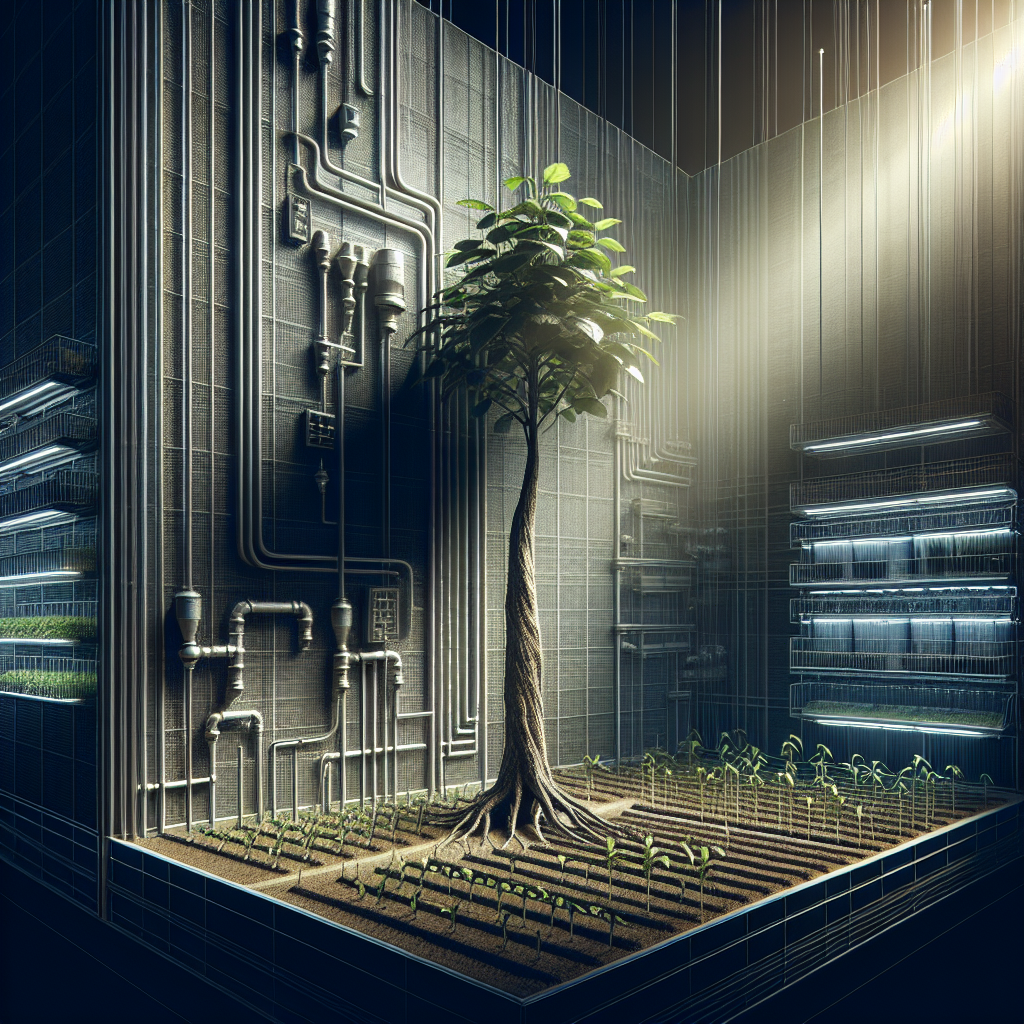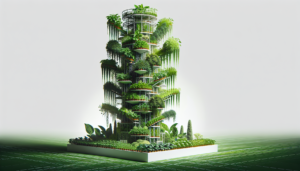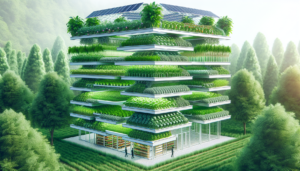
Hey, are you curious about the world of vertical farming? Well, hold tight because we’re about to take a deep dive into the challenges and drawbacks of this innovative method. From limited crop variety to high energy consumption, vertical farming has its fair share of obstacles to overcome. But fear not, as we explore these challenges, we’ll also uncover potential solutions and advancements that are making this technology increasingly sustainable and efficient. So get ready to explore the highs and lows of vertical farming and discover how it’s shaping the future of agriculture.
Challenges and Drawbacks of Vertical Farming
Vertical farming has gained popularity in recent years as a sustainable and efficient method of food production. However, like any agricultural practice, it also comes with its fair share of challenges and drawbacks. In this article, we will delve into the limitations and obstacles faced by vertical farmers, providing a comprehensive overview of the potential issues you may encounter.
Limited Crop Variety
One significant challenge in vertical farming is the limited variety of crops that can be grown successfully in this environment. While leafy greens and herbs thrive in vertical systems, larger crops such as fruit trees or grains face space limitations. The vertical structure of these farms poses restrictions on the height and spread of plants, making it challenging to cultivate a diverse range of crops. As a result, farmers are often reliant on crop varieties that are well-suited for vertical farming systems.
Dependence on Specialized Equipment
Vertical farms heavily rely on specialized equipment to maintain optimal growing conditions for crops. From climate control systems to hydroponic or aeroponic setups, these technologies are vital for achieving high yields. However, this dependence on complex machinery can also pose challenges. Maintenance, repairs, and the initial setup of infrastructure can be costly and time-consuming, adding to the operating expenses of vertical farms.
Limited Space for Larger Crops
Another obstacle faced by vertical farmers is the restricted space available for larger crops. The compact nature of vertical farms means that plants must be grown in a stacked formation, which limits the availability of vertical growth for taller plants. This can be a significant hindrance when it comes to cultivating crops like fruit trees or grain crops that require ample space for their roots to develop.
Challenges in Growing Root Crops
Root crops, such as carrots and potatoes, present unique challenges in vertical farming. Unlike leafy greens that can grow in the absence of soil, root crops rely on nutrient-rich soil for proper growth. Vertical farming, however, typically utilizes soilless growing systems like hydroponics or aeroponics, which may not be conducive to the cultivation of root crops. The lack of soil and the need for an optimal root environment make it difficult to replicate the conditions necessary for successful root crop cultivation in vertical farms.
High Initial and Operating Costs
One of the most significant drawbacks of vertical farming is the high initial and operating costs associated with setting up and running these systems. The infrastructure required for vertical farms, including climate control systems, lighting, and irrigation setups, can be expensive to acquire and install. Additionally, the high energy consumption of these farms increases operational costs, making it financially challenging for farmers, especially those starting out.
Expensive Infrastructure Setup
The establishment of vertical farms necessitates the installation of various infrastructure components. Lighting systems, including artificial LED lights, are a fundamental requirement for vertical farms to provide sufficient light to the plants. However, these lighting fixtures can be costly to purchase and maintain. Additionally, the need for ventilation and insulation to regulate temperature further adds to the infrastructure expenses, significantly impacting the initial investment required.
High Energy Consumption
Vertical farms demand a considerable amount of energy to power the specialized equipment used for lighting, irrigation, and climate control. The use of artificial lighting, in particular, contributes significantly to the energy consumption of these farms. As a result, energy costs can be exorbitant, putting financial strain on vertical farmers and making it difficult for them to maintain profitability.
Costly Maintenance and Repairs
Maintaining and repairing the complex machinery and infrastructure in vertical farms can also be a considerable expense. Regular upkeep and troubleshooting are necessary to ensure that everything is in proper working order. From replacing lights and filters to addressing plumbing or electrical issues, these repairs can be time-consuming and costly, impacting the overall profitability of a vertical farm.
Technological Limitations
While technology plays a vital role in the success of vertical farming, it also presents certain limitations and challenges. Firstly, the dependence on artificial lighting can be a drawback. While LED lights have improved energy efficiency, they still consume a significant amount of electricity. The reliance on artificial lighting also means that vertical farms are limited in terms of natural light availability.
Another technological limitation is the difficulty in automating processes. While automation can streamline operations, the vertical growing environment makes it challenging to implement automated systems effectively. The varied spacing between plants and the vertical stacking can create obstacles for robotic or machine-based harvesting and maintenance.
Additionally, the lack of standardized systems in vertical farming poses technological challenges. With multiple manufacturers providing different equipment and technologies, compatibility issues may arise. Farmers may find it challenging to integrate different components and systems into a cohesive and efficient workflow.
Environmental Impact
While vertical farming is often seen as an environmentally friendly alternative to traditional agriculture, it is not without its own environmental drawbacks. One such concern is the high energy consumption of vertical farms. The significant electricity usage, particularly for lighting and climate control, contributes to increased carbon emissions. This reliance on non-renewable resources can undermine the sustainability benefits of vertical farming.
Another potential environmental impact is the potential for water pollution. Vertical farms utilize water-intensive growing methods such as hydroponics or aeroponics, which require constant irrigation. If not adequately managed, the runoff from these systems can contain excessive nutrients and chemicals, posing a risk to water bodies and ecosystems.
Limited Market Demand
Vertical farming can face challenges in terms of market demand and consumer preferences. The high cost of producing crops in vertical farms translates to higher prices for consumers. This can result in limited market demand, as many consumers may opt for more affordable alternatives produced through traditional farming methods.
Additionally, there may be a preference among consumers for produce grown using traditional agricultural methods. The perceived taste and quality of conventionally grown food, along with a lack of consumer awareness about vertical farming practices, can deter individuals from embracing vertical farm products.
Scaling Challenges
Scaling up vertical farms can present a range of challenges, especially in densely populated urban areas. The complexity of expanding these farms vertically, while ensuring efficient light distribution and access to plants, requires careful planning and design. Additionally, logistical difficulties such as transportation to urban markets and limited available land pose obstacles to scaling vertical farming operations.
Furthermore, zoning and regulatory constraints in urban areas can impede the growth of vertical farms. Local regulations may limit the building height, land use, or agricultural practices, making it challenging to expand vertically. Clear and supportive regulatory frameworks are crucial to fostering the growth of vertical farming and overcoming these scaling challenges.
Exposure to Crop Pests and Diseases
Vertical farms can be vulnerable to the infestation of crop pests and the rapid spread of diseases. With many plants closely packed together in a vertical system, the risk of pests and diseases spreading quickly between crops is increased. Implementing effective pest control measures can be challenging, particularly when integrated pest management techniques have limited applicability in vertical farming setups.
Proper crop health maintenance can also be a challenge, given the unique growing conditions of vertical farms. The limited access to natural elements, such as sunlight and soil, can affect the overall health and resilience of the crops. Monitoring and responding to signs of disease or nutrient deficiencies become critical tasks for vertical farmers to ensure the well-being of their plants.
Potential Water Shortage
Vertical farms require substantial amounts of water for irrigation purposes. The soilless growing systems used in vertical farming, such as hydroponics or aeroponics, rely on a consistent supply of water to deliver nutrients to the plants. This high water consumption can strain local water resources, particularly in regions already facing water scarcity.
Moreover, the lack of sustainable water management practices in vertical farming can exacerbate the issue. The recycling and reusing of water are essential to mitigate the strain on water supplies, but implementing such practices may require additional investment and infrastructure modifications.
Labor Intensive
Vertical farming, despite the implementation of technological advancements, remains a labor-intensive agricultural practice. Skilled workers are required to oversee the daily operations, monitor the growth and health of the crops, and manage the complex machinery. However, finding qualified personnel with knowledge of both vertical farming practices and technological systems can be a challenge in many regions.
The high labor costs associated with vertical farming can also impact the financial viability of these farms. The requirement for skilled workers, combined with the need for continuous monitoring and maintenance, increases the overall labor expenses involved in vertical farming.
Quality and Taste Concerns
There are certain perceptions regarding the quality and taste of crops grown in vertical farms. Some individuals believe that produce from vertical farms may have an inferior taste compared to conventionally grown crops. Nutritional concerns also arise, as the absence of soil in vertical farming systems means that crops may lack essential nutrients derived from the growing medium.
Additionally, the lack of soil-derived flavors in hydroponically or aeroponically grown crops can be a deterrent for consumers. The unique flavors and characteristics associated with soil-grown produce may not be fully replicated in vertical farming, potentially impacting consumer preferences and market demand.
In conclusion, while vertical farming offers numerous benefits in terms of sustainability and efficient food production, it is important to recognize and address the challenges and drawbacks associated with this agricultural practice. From limited crop variety and high initial and operating costs to environmental impact and scaling challenges, vertical farmers must navigate through various obstacles to ensure successful operations. By understanding and finding effective solutions for these challenges, vertical farming can continue to evolve and contribute to a more sustainable future in food production.







